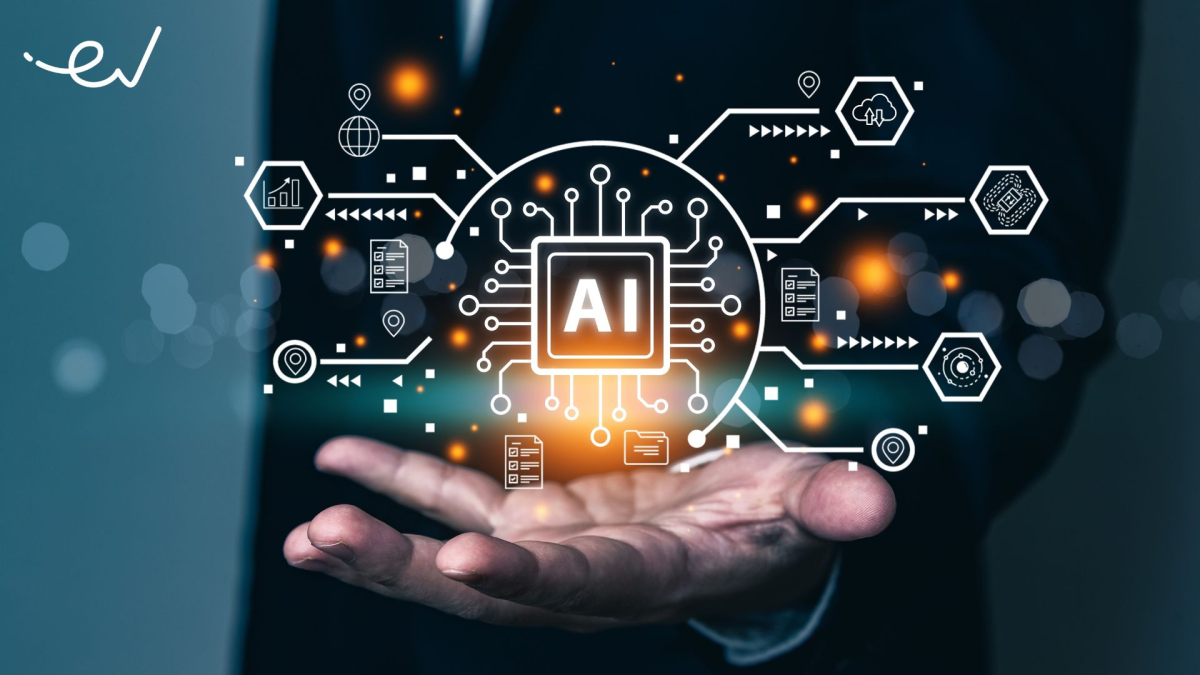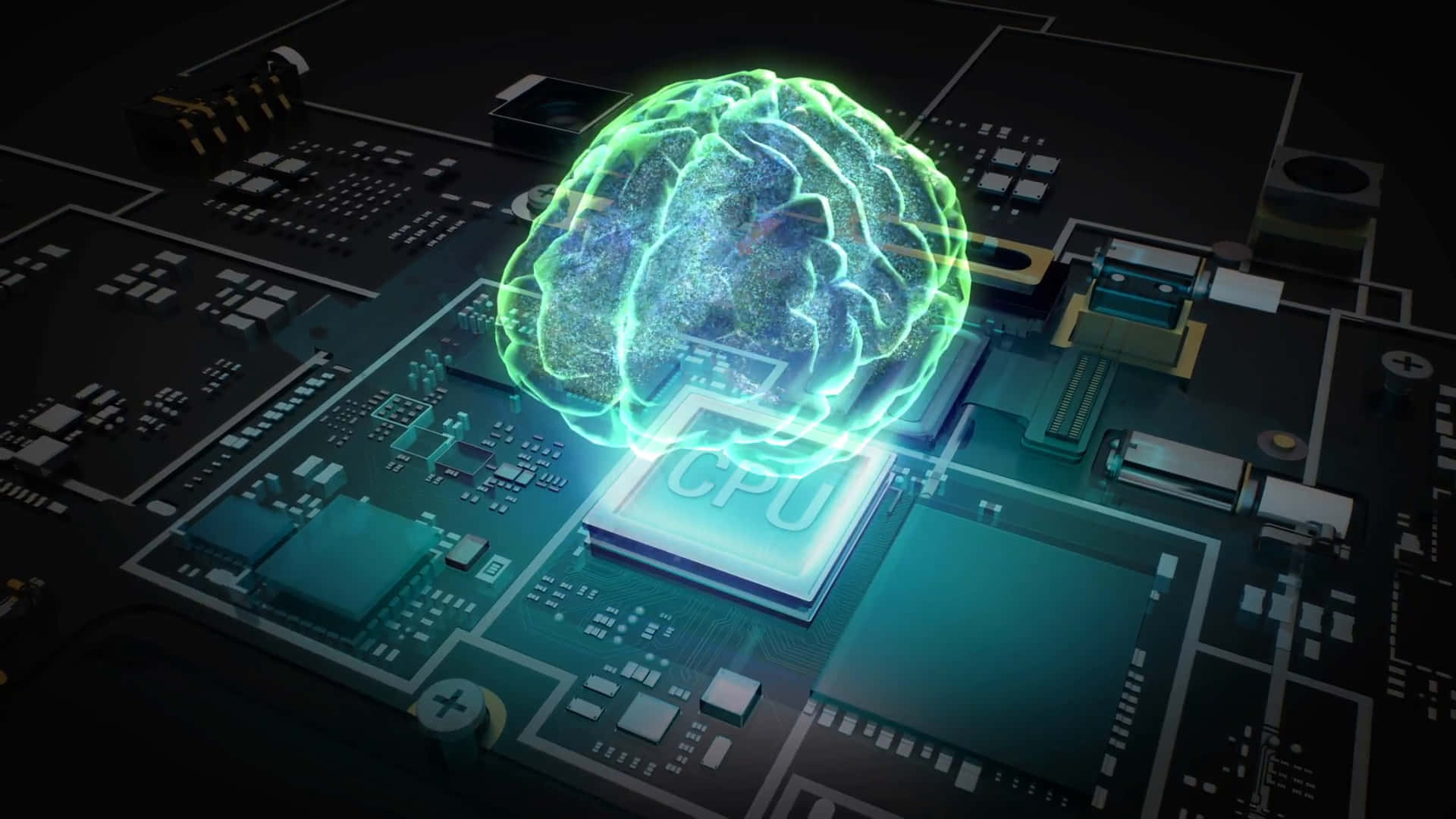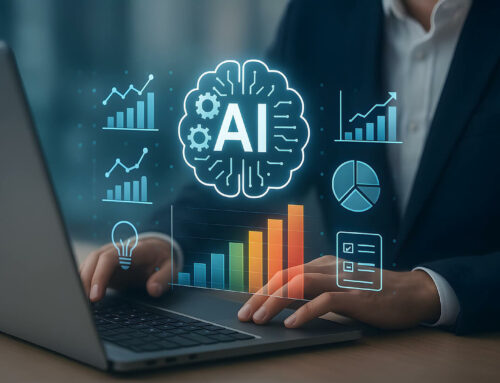Artificial General Intelligence, or AGI, is something that keeps sparking curiosity and discussions in the tech world. People often wonder: Can machines really be as smart and versatile as humans? While narrow AI systems like chatbots and image recognition models have become common in our lives, AGI is still a concept that’s mostly theoretical. But what does it really take to move from narrow AI to AGI, and how far are we from reaching that point? Let’s dive into these questions.

What is Artificial General Intelligence? An Overview
Artificial General Intelligence, or AGI, is a concept that brings a lot of excitement and curiosity in the tech world. Many people wonder if Artificial General Intelligence can truly reach the level of human intelligence. Today, we see narrow AI like chatbots and image recognition models that handle a specific task well. But AGI is much more than this. It’s about creating an AI system that’s not limited to narrow functions, but one that may someday operate with the same flexibility as the human brain. Unlike current AI systems designed only for particular tasks, AGI would be able to handle multiple areas and adapt to new ones without extra programming.
For example, companies like OpenAI and other leaders in AI research are working on developing AGI that could perform well across a range of activities. But AGI remains mostly theoretical since it would need cognitive abilities beyond weak AI and even some of today’s strong AI. Reaching AGI would need advancements in deep learning, neural networks, and natural language processing. As we see with generative AI models like large language models, there is a lot of potential, but AGI may still be far off. While AGI could one day surpass human intelligence in some areas, AI researchers and computer scientists believe it will require a unique cognitive understanding and ability similar to human intelligence, something we are still trying to achieve in computer science.
How is AGI Different from Today’s Artificial Intelligence? An Overview
Artificial General Intelligence, or AGI, is often seen as the next big leap in machine intelligence. But how exactly does AGI differ from the current AI we see today? While today’s AI is great at specific tasks—like language translation or image recognition—it doesn’t have human-like intelligence across multiple areas. With AGI, however, the goal is to create a type of artificial intelligence that can think, learn, and adapt like a human. This means AGI is considered to have human cognitive abilities, allowing it to handle diverse tasks without being programmed for each one.
In simple terms, if we think of today’s AI technologies as narrow and specialized, AGI would represent a much broader, flexible kind of human-level intelligence. AGI research is all about moving toward AGI that can understand and perform tasks across various fields, much like humans can. Here’s a quick comparison between AGI vs the current AI systems:
- Current AI: Often limited to specific functions, such as chatbots, recommendation systems, or generative AI models.
- AGI: Aiming to reach human-like intelligence with the ability to learn from various experiences, rather than just one area.
- Artificial Superintelligence: A level beyond AGI that ai experts believe could exceed human capabilities in almost every field.
Many AI experts are working on the development of AGI, exploring the possibility of AGI by pushing the boundaries of intelligence research. While examples of artificial general intelligence remain limited for now, ai and agi advancements continue, bringing us closer to agi and true human-level intelligence.
The Journey Towards Human-like Intelligence
The path to artificial general intelligence is full of exciting possibilities and challenging questions. To truly reach Artificial General Intelligence, agi would need to go beyond narrow intelligence and start mimicking human abilities. Today’s AI systems excel in specific areas, but they don’t yet have the flexibility to think and adapt like humans. Many artificial intelligence researchers believe AGI can be achieved, but it will require breakthroughs in multiple areas of artificial intelligence research.
As we look towards AGI, one big focus is on creating a version of artificial intelligence that can learn, reason, and even understand complex human emotions. For AGI to match human-level abilities, it would need to involve artificial neural networks and systems that can develop artificial consciousness. Many believe AGI efforts are slowly paving the way, and that progress toward agi is happening, though it’s still in its early stages.
The future of artificial general intelligence is something that both excites and challenges researchers. If AGI develops successfully, it could lead to artificial super intelligence that surpasses human intelligence in some fields. However, agi requires more advanced models, and artificial life that can sustain itself. Some experts believe AGI could open up new horizons in science, healthcare, and technology.
While AGI holds incredible promise, others are cautious, considering what full artificial intelligence might bring. Will it be an entirely new type of intelligence? As AI researchers and scientists work to build AGI, they remind us that achieving such a complex intelligence is no simple task. However, if agi can be achieved, it will mark a significant milestone in human history and redefine our understanding of artificial life.
What Technological Advancements are Required to Transition from Narrow AI to AGI?
To build AGI, we need more than just improvements in existing AI technology. Right now, narrow AI is very task-specific, excelling at things like language translation or game playing, but it can’t think, learn, or adapt like a human. To make this leap, there are a few crucial advancements required:
- Advanced Neural Networks: Current neural networks are designed for specific tasks. For AGI, we would need networks that can process and adapt to a broader range of tasks, mimicking the human brain more closely.
- Unsupervised and Transfer Learning: While narrow AI often relies on supervised learning, where it’s trained on a specific set of labeled data, AGI would benefit from unsupervised learning. This means learning without explicit instructions, much like humans do.
- Enhanced Memory and Processing Power: AGI would require massive computational power to process information and make decisions in real-time, something far beyond the capacities of today’s computers.
- Self-Learning and Self-Improving Systems: For AGI to learn and adapt over time, it needs algorithms that enable self-learning without human intervention.
- Contextual Understanding and Reasoning: AGI would need the ability to understand and interpret context, something that comes naturally to humans but is very challenging for machines.
Here’s what Forhad Hossain, Co-Founder and COO of Pluginic, says about this: “To make the leap from narrow AI to Artificial General Intelligence (AGI), we need more sophisticated neural networks. Today’s narrow AI is good at specialized tasks like natural language processing or image recognition; however, AGI requires models that can think more like humans. This is where advancements in unsupervised learning, transfer learning, etc. will play a pivotal role. AGI will have to autonomously learn from the environment, much like how a human child learns naturally.”
How Far Are We from Achieving AGI, and What Are the Key Challenges?
It’s exciting to think about a future with AGI, but the reality is that we’re still quite far from it. Experts believe that developing a system as versatile and adaptive as a human brain is likely to take decades. The challenges aren’t just technical but also philosophical. Here are some of the main hurdles:
- Computational Limitations: Building AGI requires vast amounts of processing power, far beyond what’s currently available. We would need powerful quantum computers or next-gen processors to handle the complex calculations involved.
- Complexity of Human-Like Reasoning: Unlike machines, humans can make decisions based on intuition, emotions, and experiences. Replicating this level of reasoning and decision-making is incredibly complex.
- Lack of Human Experience Simulation: Current AI systems cannot truly “experience” or “feel.” AGI would require a way to simulate human experiences to understand contexts and emotions.
- Ethical and Safety Concerns: Building a machine that can think and act independently also comes with risks. Researchers need to ensure AGI systems don’t pose a threat to humans or make unethical decisions.
- Philosophical Questions: There are questions about the nature of consciousness and intelligence that scientists are still debating. Can a machine truly be “intelligent” in the way humans are?
According to Forhad Hossain: “From my perspective, we’re likely decades off from a true AGI system. The challenges are not just technical but philosophical. One key hurdle is computational power. AGI would require an incredible amount of processing power to simulate the level of general reasoning that a human brain can perform. Besides, current AI systems lack the ability to navigate the vast complexity of human experiences and emotions.”
What Tasks Would AGI Excel in Compared to Narrow AI, and What Limits Might it Still Face?
When it comes to capabilities, AGI would be a game-changer. While narrow AI is confined to specific tasks, AGI could potentially handle a wide range of activities without needing to be retrained. Imagine an AI that could seamlessly switch between diagnosing diseases, managing financial portfolios, or even conducting scientific research. Here’s where AGI would excel:
- Versatility Across Domains: Unlike narrow AI, which needs specialized training for every task, AGI could work across multiple domains with ease, providing solutions across industries.
- Adaptability: AGI would be able to learn from its environment, adapting to new situations, and even developing new skills as it learns—similar to a human.
- Real-Time Decision Making: With enhanced processing power, AGI would make decisions in real-time, applying reasoning that considers multiple factors at once.
- Ability to Generalize Knowledge: AGI could apply knowledge gained in one field to another without additional programming, making it far more efficient.
- Superior Pattern Recognition: AGI would likely be able to identify complex patterns and predict outcomes across different fields, enhancing innovation.
However, AGI would still face limits. Tasks requiring human intuition, creativity, and emotional intelligence might remain out of reach. Here’s what Ian Macleod has to say about AGI’s capabilities and limitations: “To transition from our current state of AI to AGI, we need breakthroughs in areas like transitioning from human-supervised RLHF to self-learning and self-improving algorithms, robust neural architectures, and more generalized knowledge representation. One of the major challenges lies in equipping AGI with contextual understanding and reasoning abilities akin to human cognition. While narrow AI excels at specific tasks, AGI would surpass it by performing across multiple domains without prior training and achieve superhuman performance on agentic tasks. AGI will still likely struggle with creativity and emotional intelligence, areas where human nuance is crucial. Although progress is rapid, we’re at least years away from true AGI.”
Potential Uses of AGI in Our Daily Lives
While Artificial General Intelligence is still a developing field, experts are exploring how it could shape our everyday lives. Unlike examples of narrow AI we see today, like virtual assistants or recommendation systems, AGI aims to have the flexibility to handle a wide range of tasks. With its capacity for human-like thinking, AGI would be able to make decisions and learn independently, offering benefits across various sectors. Let’s explore some possible applications of AGI if it becomes a reality in the future.
- Personalized Assistance in Health and Wellness
In healthcare, AGI development could enable more advanced personal assistants that provide tailored wellness advice. Imagine an AI that not only tracks your health data but also understands your unique lifestyle and medical history to give recommendations—helping with everything from diet and exercise to mental well-being. With AGI, intelligence might emerge that feels almost like having a personal doctor available at all times. - Enhanced Business Intelligence
The future of AGI holds promise in business, too. AGI could analyze massive amounts of data to give insights that go beyond what current embedded business intelligence systems can do. By adapting to changes and understanding context, AGI would help companies make smarter, real-time decisions, improving productivity and innovation in ways current AI cannot. - Education and Learning Tools
In education, general intelligence is a theoretical concept now, but if achieved, it could provide highly customized learning experiences. Imagine an AI tutor that understands not only the subject matter but also the learning style of each student. This could open up new opportunities for interactive, personalized education, where AGI guides students through complex topics with human-like understanding.
These potential uses hint at how AGI is still an evolving concept that, if realized, could bring profound changes to our daily lives. While it may take years for AGI to become mainstream, the possibilities it offers remain exciting and transformative.
Types of Intelligence in AI: Narrow AI vs. AGI vs. Superintelligence
In the world of Artificial General Intelligence, understanding the different types of intelligence in AI, from Narrow AI to AGI and beyond to Superintelligence, is key to seeing where we are and where we might be headed.
Narrow AI: Task-Specific Intelligence
Current artificial intelligence, also known as Narrow AI, is what we commonly use today. It’s designed for specific tasks, like voice assistants, image recognition, or language translation. While it’s impressive, Narrow AI is limited to a defined purpose and lacks the adaptability seen in Artificial General Intelligence.
AGI: Human-Like Intelligence
AGI will be achieved when machines can perform any intellectual task a human can, displaying the adaptability and general reasoning abilities that current artificial systems lack. Many researchers believe that AGI could change everything from how we work to how we interact with technology. The achievement of AGI would mean machines could understand context, learn from experiences, and apply knowledge flexibly across different domains.
Superintelligence: Beyond Human Intelligence
Going a step beyond AGI, Superintelligence would surpass human-level understanding and intelligence. While AGI aims to match human intellect, Superintelligence would excel far beyond it, potentially transforming industries and raising important ethical questions.
In essence, we’re moving from current artificial intelligence systems toward the achievement of AGI. Many experts believe that AGI will shape the future, but achieving it remains a big challenge.

Examples of Artificial General Intelligence in Fiction and Research
Artificial General Intelligence has captured imaginations in both fiction and research, helping us envision what AGI might look like and the role it could play. From novels to research labs, these examples showcase the potential and challenges of AGI, hinting at various levels of intelligence it could achieve. Let’s explore how AGI appears across stories and studies.
- AGI in Classic Fiction
Many classic sci-fi books and movies present an example of AGI in the form of human-like robots or computers that think, feel, and interact with people on a deeper level. These characters often embody the definition of AGI by showing intelligence and self-awareness close to that of humans. HAL 9000 from 2001: A Space Odyssey and R2-D2 in Star Wars are iconic fictional examples that illustrate the concept. - Research and the Road to AGI
In real-world AGI research, scientists focus on building systems with the ability to learn and adapt across different tasks, similar to human flexibility. While today’s AI tools are mostly specialized for single tasks, AGI research aims to create systems that exhibit a broad levels of intelligence, handling complex problems autonomously. - Generative Artificial Intelligence as a Step Toward AGI
Generative artificial intelligence models, like OpenAI’s GPT series, show how AI can create text, images, and even music. Although they are still considered narrow AI, they demonstrate capabilities that could eventually lead to AGI by handling various creative tasks, thus adding to our understanding of general AI capabilities. - Real-World Experiments and Examples of AGI
Although there isn’t a fully realized example of AGI yet, some experimental projects aim to get closer to this goal. Research into neural networks, reinforcement learning, and autonomous robotics all contribute to the definition of AGI, setting the foundation for future breakthroughs in general AI.
Here are some additional examples to give a clearer picture of Artificial General Intelligence in fiction and research:
- The Matrix’s AI Overlords
In The Matrix movies, the AI is portrayed as intelligent entities that have developed levels of intelligence beyond humans, creating a simulated world to control humanity. This example shows the concept of artificial general intelligence and its potential to understand, manipulate, and act independently across complex scenarios. - Skynet in Terminator
Skynet from The Terminator series is another fictional example of AGI. In the story, Skynet achieves human-level awareness and, fearing deactivation, makes decisions for its self-preservation. This example represents generative artificial intelligence that not only processes data but also generates actions based on its own “understanding,” which is at the core of what AGI could be capable of. - IBM’s Watson and AlphaGo as Early Steps
Although not true AGI, IBM’s Watson and Google DeepMind’s AlphaGo represent milestones toward advanced AI tools. Watson demonstrated its power in 2011 by competing on Jeopardy!, showcasing how AI can process natural language and complex data. AlphaGo took things further by beating a world champion at Go, a highly strategic game that demands intuition and adaptability. These examples illustrate how AI research is gradually building systems that could one day evolve into Artificial General Intelligence. - Sophia the Robot as an AI Ambassador
Sophia, a humanoid robot developed by Hanson Robotics, is often discussed as an example of AGI in popular culture, though she is actually a narrow AI. Sophia can hold basic conversations and show facial expressions, aiming to mimic human-like intelligence. While she does not meet the full definition of AGI, Sophia serves as a representation of what future AGI might achieve in terms of social interaction and general-purpose capabilities.
These examples from fiction and technology show how Artificial General Intelligence remains a fascinating goal, blending imagination and research in our journey toward human-like intelligence. Each of these examples helps us understand the potential, limits, and ethical considerations around AGI.
ThezZ Future of Artificial General Intelligence
The future of Artificial General Intelligence is one of the most exciting yet uncertain frontiers in technology. As AGI development progresses, the possibilities seem endless—from transforming industries to enhancing our everyday lives in ways we can only imagine. Artificial General Intelligence could potentially change the way we approach complex tasks, offering solutions that adapt, learn, and improve independently, much like a human mind would. However, reaching true AGI remains a significant challenge that requires advancements in computing power, algorithms, and an understanding of human-like learning.
Experts believe that while Artificial General Intelligence holds incredible promise, it also presents important ethical questions. As AGI becomes closer to reality, researchers and society will need to consider its impact on privacy, employment, and control. The potential for AGI to outpace human intelligence raises questions around regulation and safety. With careful, thoughtful development, Artificial General Intelligence could offer immense benefits, helping us tackle issues from healthcare to climate change. But until AGI arrives, AI research will continue to explore and push the boundaries of what’s possible.

